The architects who built Palm Springs: William Pereira
While contributing only a few seminal projects to Palm Springs, Pereira (1909-85) defined the town’s rich architectural heritage. Pereira’s most famous scheme in the area is arguably Palm Spring’s J. W. Robinson’s Department Store, a large-scale structure in the centre of town, on South Palm Canyon Drive.
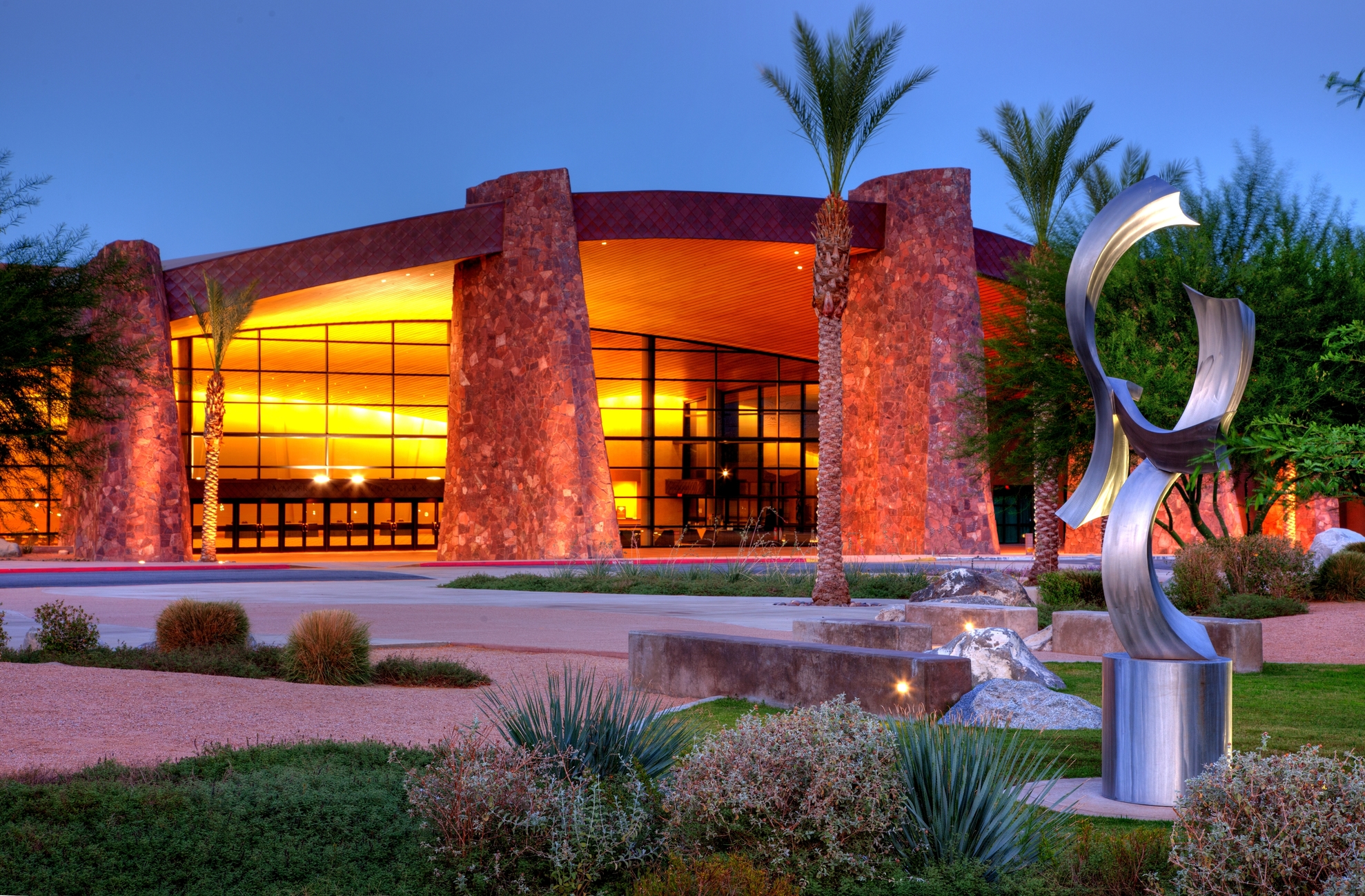
The architecture and career of American modernist William Pereira (1909-85) has been long celebrated and well documented. After founding William L. Pereira & Associates in Los Angeles in 1958, Pereira went on to become widely recognised for a series of iconic buildings – with an impressive 400-or-so structures in total to his name. Examples include several university masterplans and buildings (including the distinctly brutalist Geisel library), multiple expansions to the Los Angeles International Airport, as well as its signature Googie-style Theme Building, the original three buildings of the Los Angeles County Museum of Art (LACMA), the Disneyland Hotel, and the Transamerica tower in San Francisco.
Almost inevitably – since Palm Springs became the nexus of aspirational celebrity life and modern architecture in the second half of the 20th century – Chicago-born Pereira was soon drawn to the Coachella Valley. And although he completed only a few seminal projects they came to define the small town’s rich architectural heritage. It was there that his style adapted and evolved, with landmark buildings drawing from the landscape and the spirit of desert modernism.
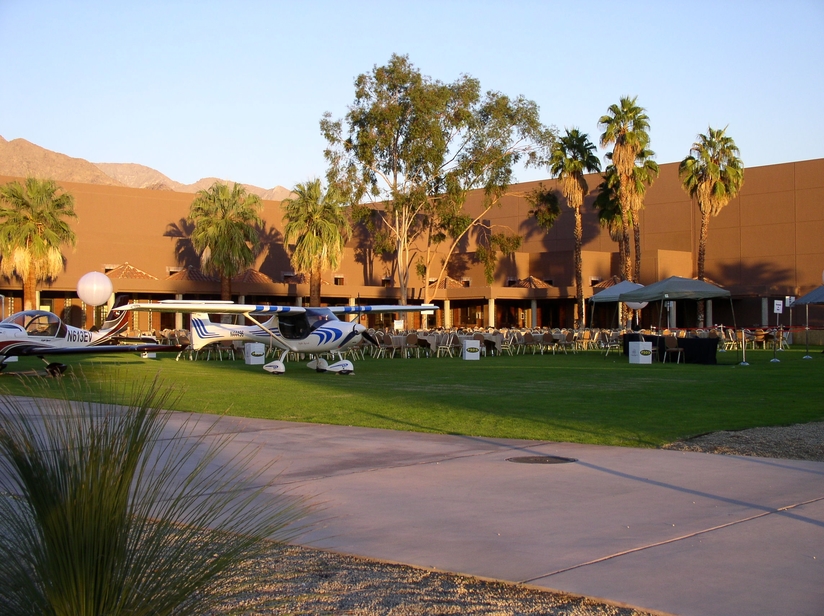
A key venue for all types of private and public events, and conferences, the centre sits at the heart of town, near the Palm Springs Art Museum.
Pereira's most famous scheme in the area is arguably Palm Spring’s J. W. Robinson's Department Store, a large-scale structure in the centre of town, on South Palm Canyon Drive. Easily identifiable by its modernist pavilion style appearance, and built on land purchased from Palm Springs pioneer Pearl McManus, this retail building was designed by Pereira (under his then-partnership with Charles Luckman) in 1958 and has since been voted a Class 1 Historic Site.
RELATED STORY
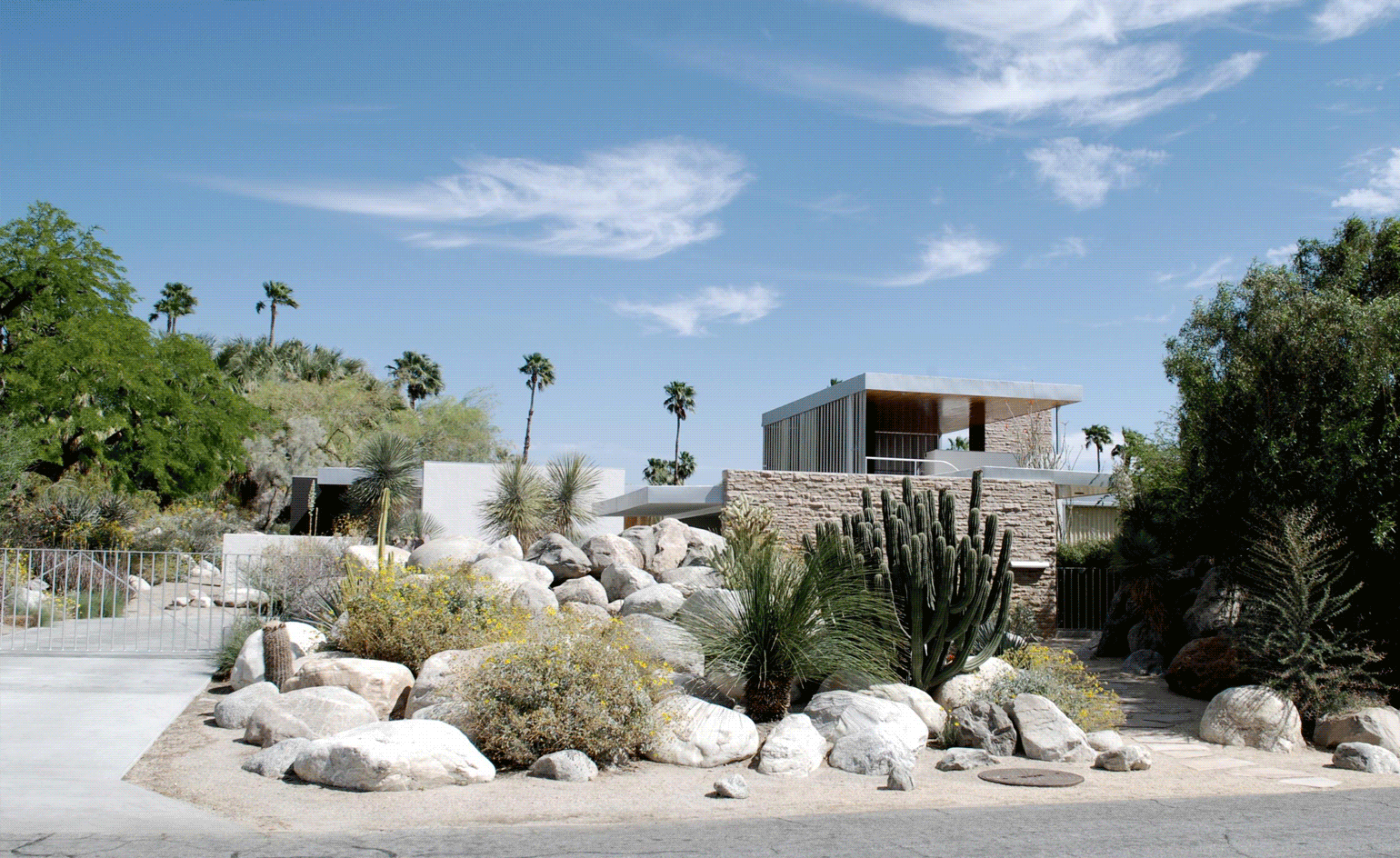
Pereira’s expressive style is evident here in the flat roof that becomes decorative through a strong, diamond-shaped pattern. The architect has been known for his love of science fiction, which is often reflected in his work, such as in the aforementioned Geisel Library. Ziggurats and pyramids feature highly in his work, which is almost always dramatic, with recurring tropes strong geometric forms, pedestals and water elements.
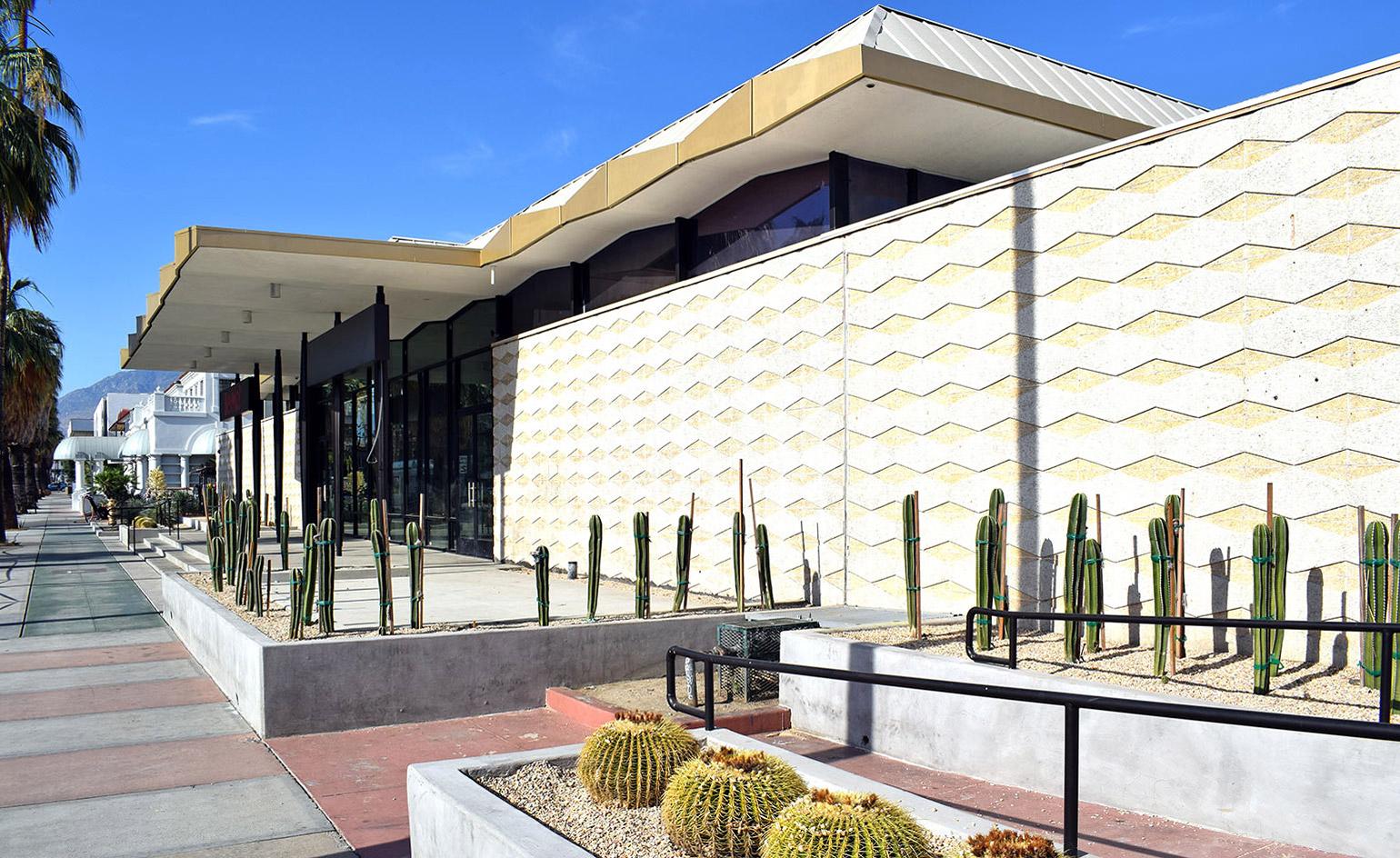
Designed by Luckman & Pereira and built in 1958, the JW Robinson department store was designated a Class 1 Historic Site by Palm Springs city council in 2013. The building was renovated in 2017 by Cioffi Architects
Another key example includes the majestic Palm Springs Convention Centre, which was designed in the 1970s and draws on the tall, rocky shapes of the site’s San Jacinto Mountains backdrop – it has since been extended by Fentress Architects in 2005. It is here that the annual Modernism Week Show & Sale takes place, this year encompassing around 85 select dealers of midcentury modern furniture, art and products (15-18 February 2019).
Pereira may not have been as prolific in Palm Springs as some of his contemporaries who flourished there, architects such as Hugh Kaptur, Donald Wexler and William Krisel. Yet his contribution to this modernist desert town must not be underestimated, most of his projects have become instant landmarks in the architectural landscape, making this American architect one of Palm Springs’ defining creatives.
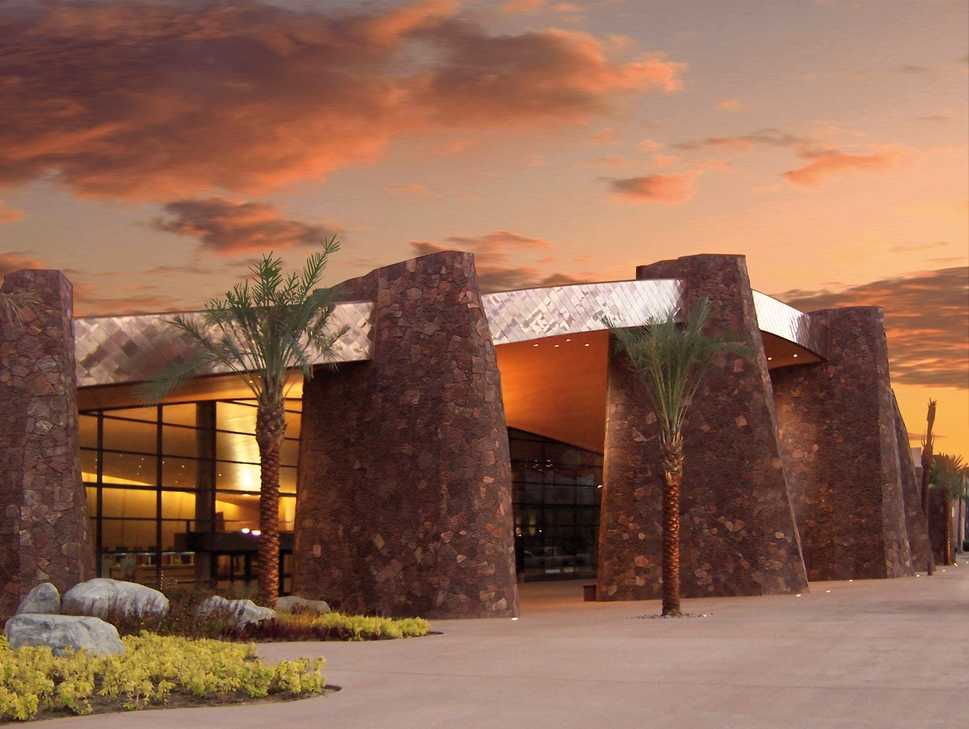
The Palm Springs Convention Center was designed in the 1970s and takes its cues from its rocky San Jacindo Mountain backdrop.
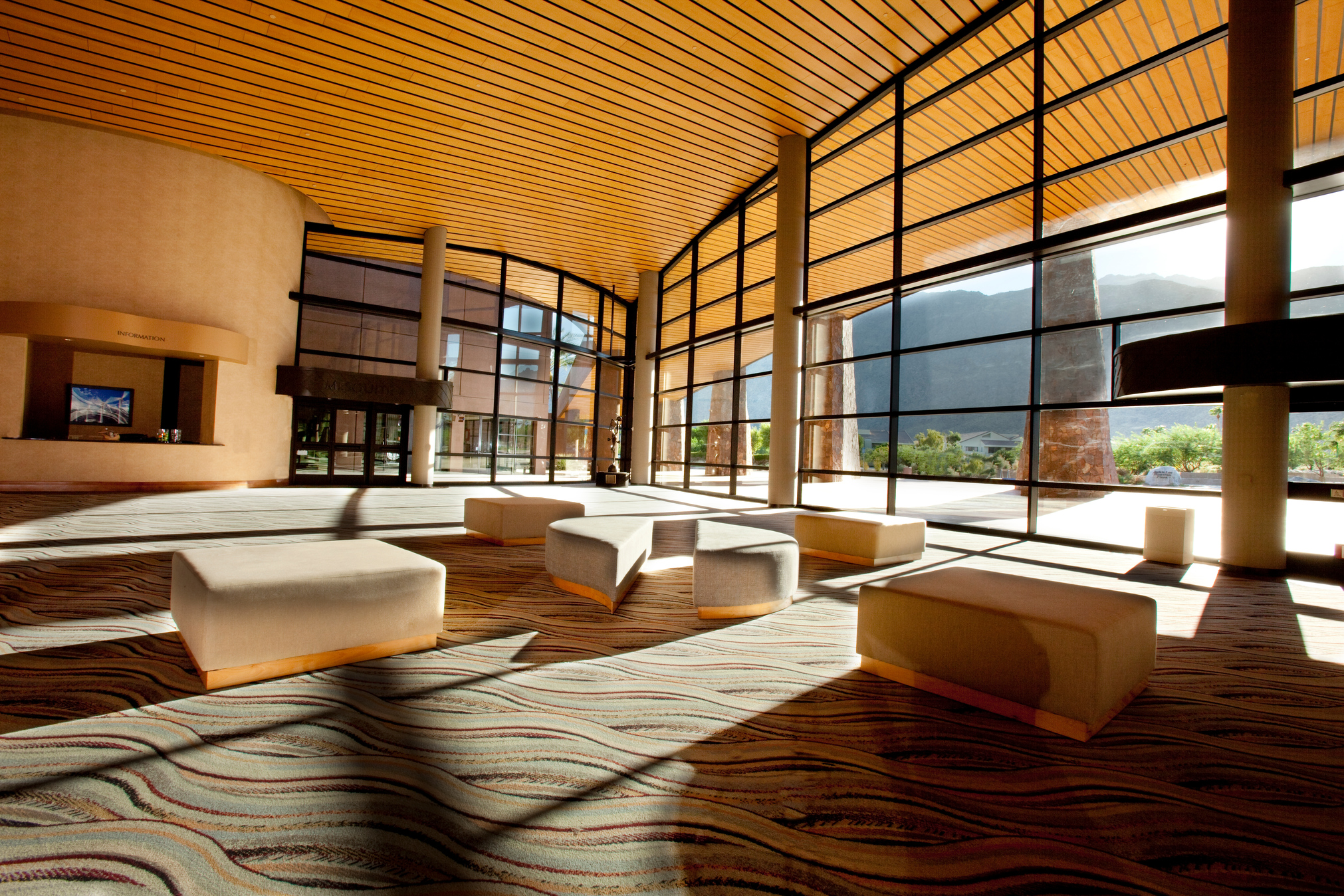
Inside, the flexible space plays host to the Palm Springs Modernism Week Show & Sale every February.
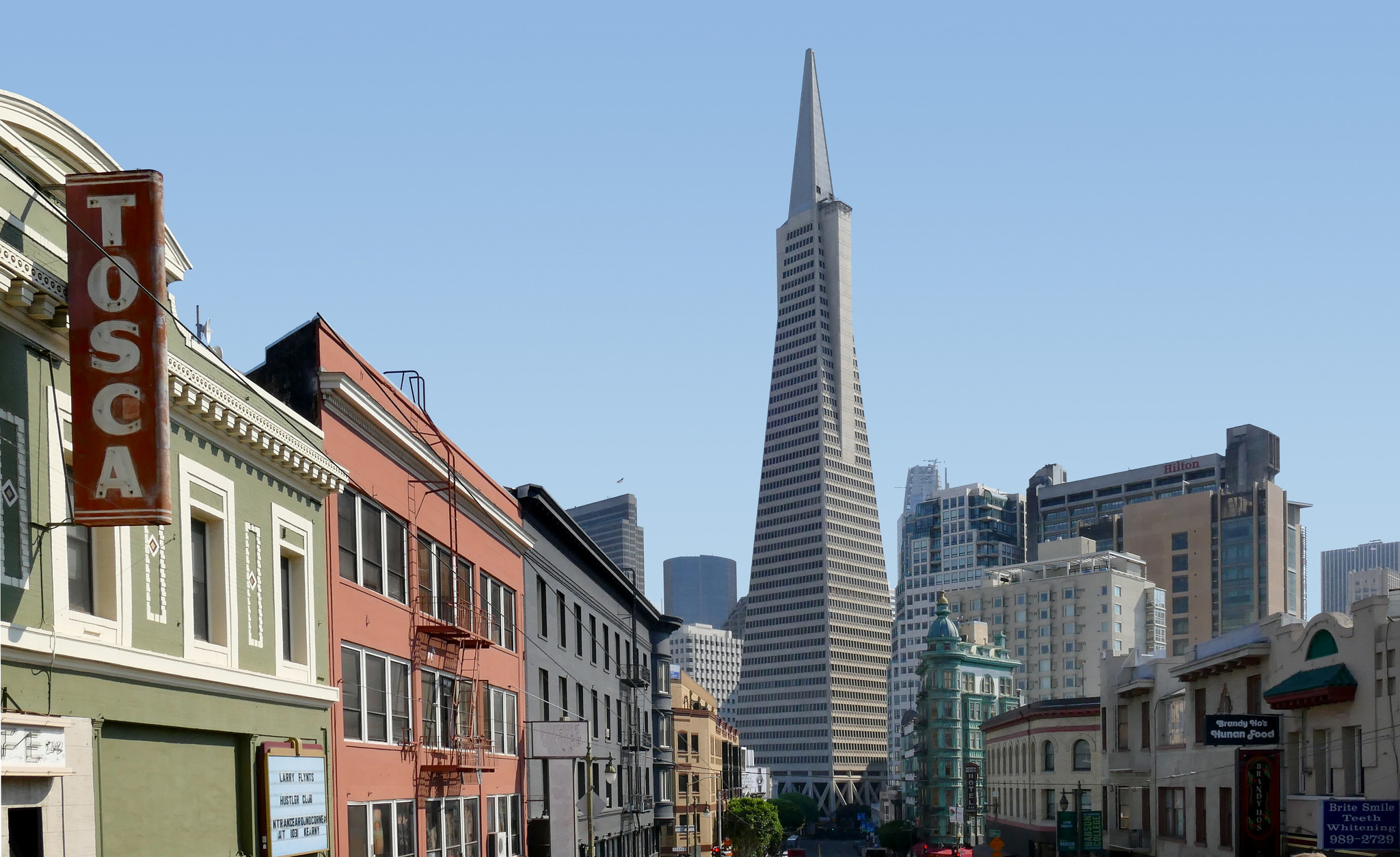
Elsewhere, key William Pereira buildings include the Transamerica Tower in San Francisco
INFORMATION
For more information visit the Palm Springs Modernism Week website
Wallpaper* Newsletter
Receive our daily digest of inspiration, escapism and design stories from around the world direct to your inbox.
Ellie Stathaki is the Architecture & Environment Director at Wallpaper*. She trained as an architect at the Aristotle University of Thessaloniki in Greece and studied architectural history at the Bartlett in London. Now an established journalist, she has been a member of the Wallpaper* team since 2006, visiting buildings across the globe and interviewing leading architects such as Tadao Ando and Rem Koolhaas. Ellie has also taken part in judging panels, moderated events, curated shows and contributed in books, such as The Contemporary House (Thames & Hudson, 2018), Glenn Sestig Architecture Diary (2020) and House London (2022).
-
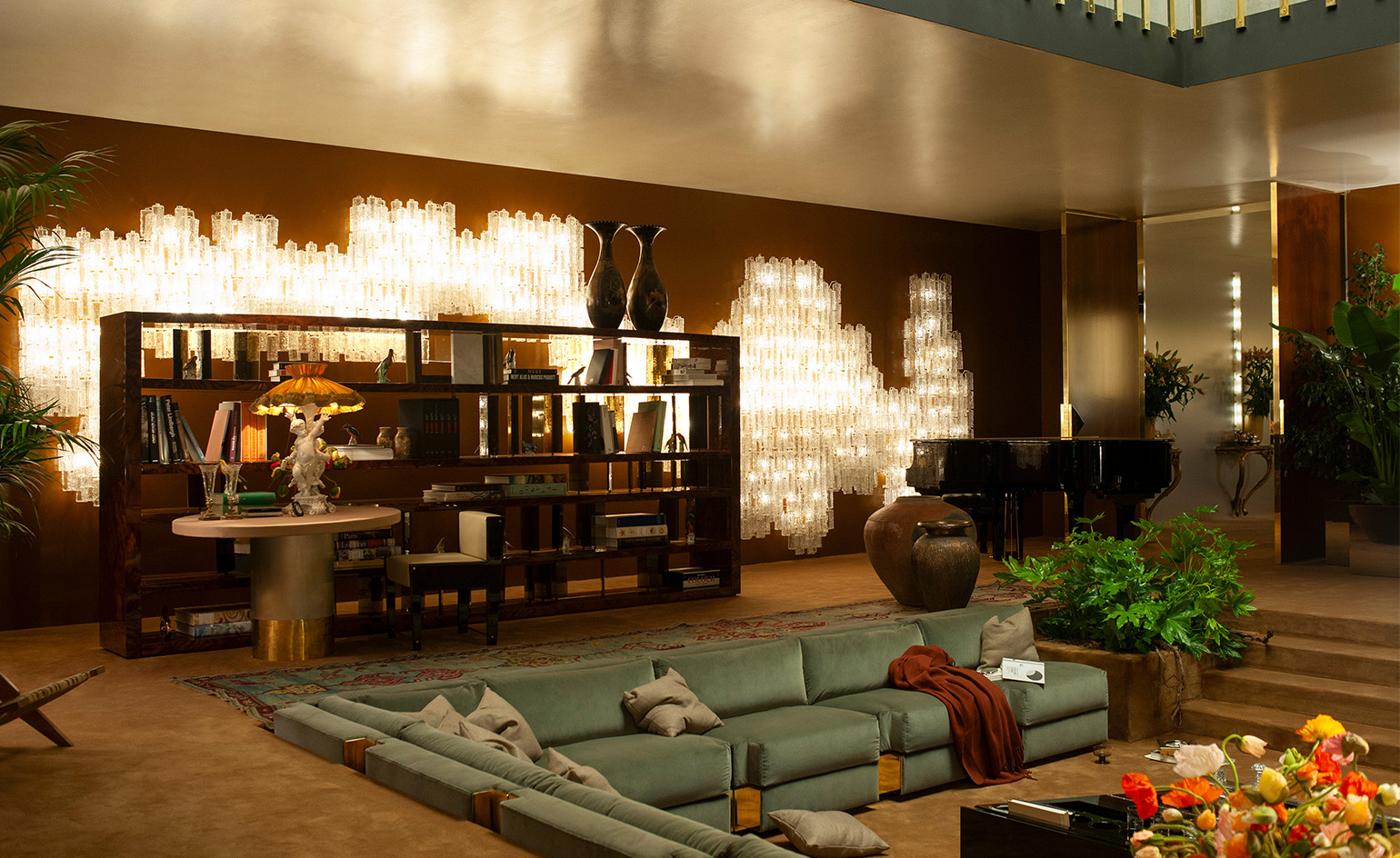 Dimoremilano and Loro Piana channel 1970s cinema in decadent Milan display
Dimoremilano and Loro Piana channel 1970s cinema in decadent Milan displayAt Milan Design Week 2025, Dimorestudio has directed and staged an immersive, film-inspired installation to present new furniture and decor for Loro Piana
By Dan Howarth Published
-
 The new Google Pixel 9a is a competent companion on the pathway to the world of AI
The new Google Pixel 9a is a competent companion on the pathway to the world of AIGoogle’s reputation for effective and efficient hardware is bolstered by the introduction of the new Pixel 9a, a mid-tier smartphone designed to endure
By Jonathan Bell Published
-
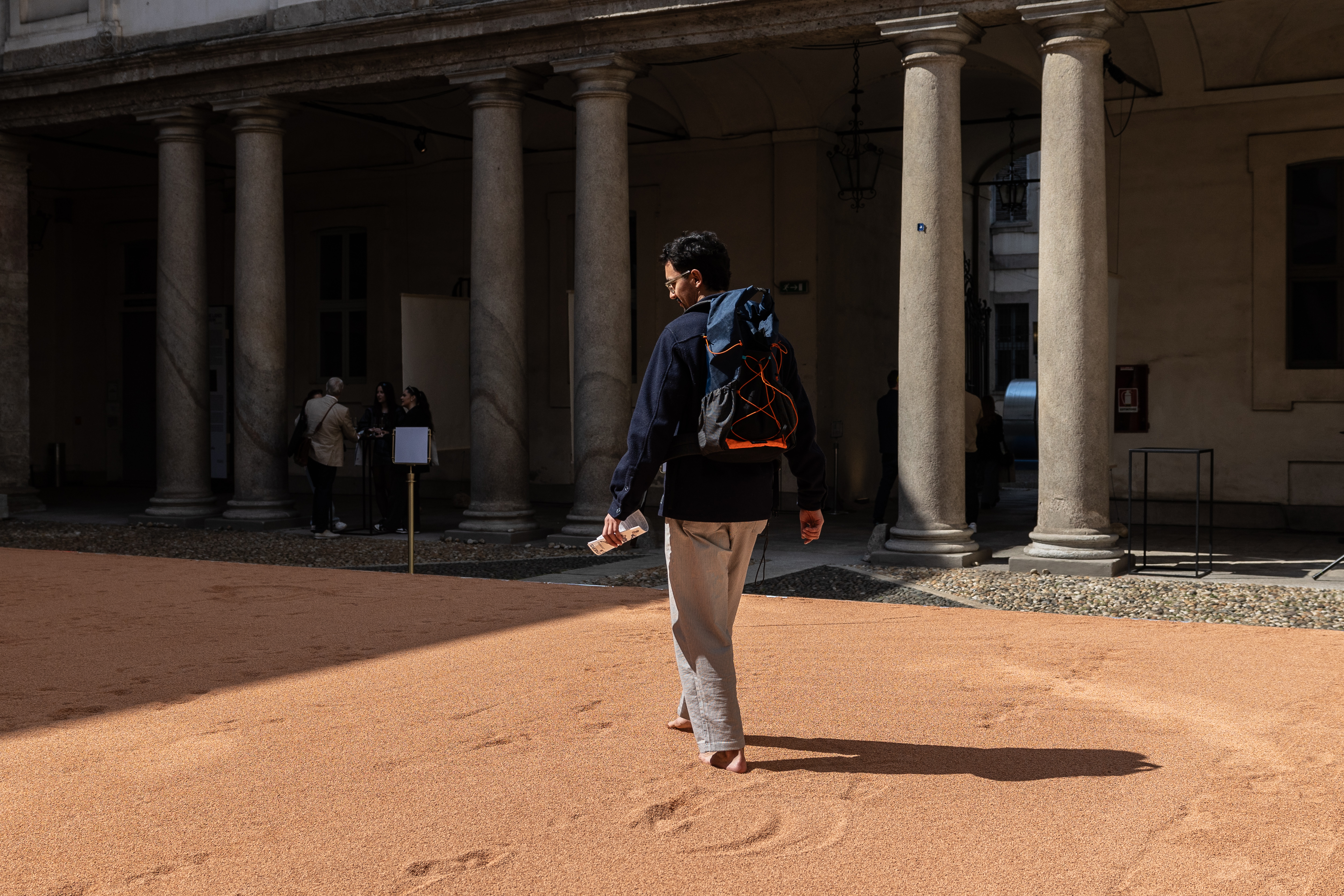 In Milan, MoscaPartners presents a poetic exploration of ‘migration’
In Milan, MoscaPartners presents a poetic exploration of ‘migration’Alongside immersive work by Byoung Cho, MoscaPartners’ Milan Design Week 2025 display features an accessible exhibition path designed for visually impaired visitors
By Cristina Kiran Piotti Published
-
 Croismare school, Jean Prouvé’s largest demountable structure, could be yours
Croismare school, Jean Prouvé’s largest demountable structure, could be yoursJean Prouvé’s 1948 Croismare school, the largest demountable structure ever built by the self-taught architect, is up for sale
By Amy Serafin Published
-
 Jump on our tour of modernist architecture in Tashkent, Uzbekistan
Jump on our tour of modernist architecture in Tashkent, UzbekistanThe legacy of modernist architecture in Uzbekistan and its capital, Tashkent, is explored through research, a new publication, and the country's upcoming pavilion at the Venice Architecture Biennale 2025; here, we take a tour of its riches
By Will Jennings Published
-
 We explore Franklin Israel’s lesser-known, progressive, deconstructivist architecture
We explore Franklin Israel’s lesser-known, progressive, deconstructivist architectureFranklin Israel, a progressive Californian architect whose life was cut short in 1996 at the age of 50, is celebrated in a new book that examines his work and legacy
By Michael Webb Published
-
 A new hilltop California home is rooted in the landscape and celebrates views of nature
A new hilltop California home is rooted in the landscape and celebrates views of natureWOJR's California home House of Horns is a meticulously planned modern villa that seeps into its surrounding landscape through a series of sculptural courtyards
By Jonathan Bell Published
-
 The Frick Collection's expansion by Selldorf Architects is both surgical and delicate
The Frick Collection's expansion by Selldorf Architects is both surgical and delicateThe New York cultural institution gets a $220 million glow-up
By Stephanie Murg Published
-
 Remembering architect David M Childs (1941-2025) and his New York skyline legacy
Remembering architect David M Childs (1941-2025) and his New York skyline legacyDavid M Childs, a former chairman of architectural powerhouse SOM, has passed away. We celebrate his professional achievements
By Jonathan Bell Published
-
 At the Institute of Indology, a humble new addition makes all the difference
At the Institute of Indology, a humble new addition makes all the differenceContinuing the late Balkrishna V Doshi’s legacy, Sangath studio design a new take on the toilet in Gujarat
By Ellie Stathaki Published
-
 How Le Corbusier defined modernism
How Le Corbusier defined modernismLe Corbusier was not only one of 20th-century architecture's leading figures but also a defining father of modernism, as well as a polarising figure; here, we explore the life and work of an architect who was influential far beyond his field and time
By Ellie Stathaki Published